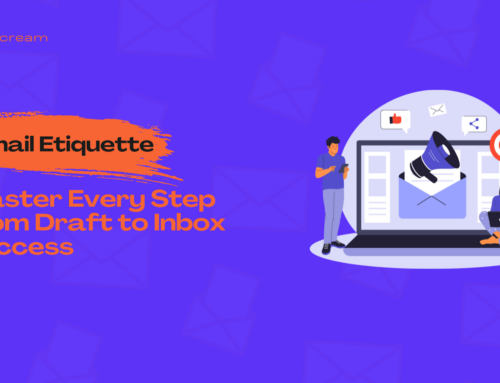Nonprofits are essential in our society as they aim to bridge gaps in public services with compassion. Yet, they struggle with legacy systems, manual processes, budgets, donors, volunteers, and beneficiaries.
Nonprofit success depends on how well they integrate, automate, and personalize their services at scale. This is only possible with AI-powered fundraising.
Nonprofit CRMs and fundraising platforms with AI features, such as predictive analytics, automated email workflows, and peer-to-peer recommendations, ease outreach and increase giving.
47% of fundraisers are using AI technology for intelligent donation amounts, donor segmentation, and automated communications. (Raisely Fundraising Benchmarks 2025).
Let’s dive into the AI-Powered Donor Segmentation aspect and answer the important questions here:
- What is donor segmentation?
- Why is donor segmentation important for non-profits?
- What is AI-powered donor segmentation? Why does it matter?
- How AI improves donor segmentation for smarter outreach?
- How does Donorbox CRM enhance AI-powered segmentation?
- What are the ethical considerations of using AI?

What is donor segmentation?
Targeting prospective donors in a crowded consumer market can be challenging! To address this challenge, strategic and personalized outreach is critical. For this, the known and proven approach is donor segmentation.
Divide your supporters into smaller groups based on characteristics, such as age, giving behavior, engagement history, or volunteer activity. It becomes easier to communicate with them based on their interests and motivations. Your supporters feel valued, and this deeper connection leads to better retention and successful fundraising.
Why is donor segmentation crucial for non-profits?
Donor segmentation acts as the basis for data-driven fundraising. It helps to tailor communication according to the donor groups and promotes successful fundraising. Further, it marks an effective donor relationship management.
What is AI-powered donor segmentation? Why does it matter?
Data helps you know who your donors are and what drives them. Organizing them according to their interests and behavior transforms raw data into meaningful relationships. Using simple lists and spreadsheets is a tedious and time-consuming process.
Here comes the role of Artificial Intelligence (AI) technology. AI helps nonprofits go beyond long lists and Excel spreadsheets. It divides donors based on their behavior, donation patterns, and previous participation. E.g., recurring donors, high-potential prospects, or lapsed supporters.
How AI improves donor segmentation for smarter outreach?
Smart segmentation:
AI segments supporters with precision. Nonprofits can divide their supporters into groups based on their philanthropic history, interests, communication preferences, and participation in events.
They can be segmented as first-time donors, monthly donors, lapsed donors, major donors, and other groups such as volunteers, event participants, or social media followers.
This donor segmentation helps nonprofits customize their outreach. They need not treat every donor the same way. Based on these insights, they can create messages that echo with individual donors’ choices or preferences.
For instance, a donor giving consistently to health programs can receive updates highlighting patient success stories. This raises engagement and retention rates.
Custom communication and fundraising strategies:
You can use customized messages for each segment.
Your queries can reflect the donor’s giving capacity and relationship with your organization. You can respect and choose the donor’s mode of communication, such as email, messages, or social media. You can maintain the tone and content. Understanding these dynamics is also crucial when considering how to create a pitch deck that resonates with potential donors, ensuring that your approach aligns with their preferences and interests.
RFM model scores:
RFM stands for Recency, Frequency, and Monetary value. RFM segmentation helps nonprofits identify their most valuable supporters from history.
Predict future donors:
AI-driven segmentation reveals donor potential by detecting patterns.
It also identifies the risk of losing donors and brings them back. Additionally, nonprofits can use propensity scoring to estimate the donor’s probability of donating.
Understand sentiments:
ChatGPT Enterprise, an AI tool offered by an experienced IT consulting company, helps nonprofits and fundraising organizations evaluate donor surveys, messages, or call transcripts.. It understands and provides a report on donor intent and motivation.
This helps in strategizing future campaigns.

Improve donor retention rates:
AI monitors email openings, click-through rates, event attendance, and donation frequency, helping nonprofits gauge levels of engagement. When integrated with an SEO Framework, these insights can also optimize online visibility and donor outreach strategies. If a donor shows disengagement signs, the system can trigger targeted content and re-engage them.
This discourages donor churn and reinforces long-term support.
How does Donorbox CRM improve AI-powered segmentation?
Tools like Donorbox and other AI-enhanced nonprofit software allow nonprofits to act on insights efficiently, turning data into actionable campaigns that engage the right donors at the right time.
Jay·AI is available for Donorbox CRM users/customers on a Pro/Premium plan. It supports smart segmentation. This enables you to target your campaign based on giving behavior, engagement history, and campaign interactions.
- Donorbox analyzes donor behavior at scale, assists you in segmenting them for campaigns. E.g. recurring donors, high-potential prospects, or lapsed supporters.
- Automatically identifies opportunities in your fundraising campaigns.
- Provides instant reporting and analysis, which helps you segment and adapt strategies.
- Crafts AI-generated content in your brand voice, drafts social media posts, emails, win-back letters, and more.
Ethical use of AI:
Nonprofits must implement responsible AI practices, ensuring ethical and transparent use. A few of the ethical considerations in using AI are as follows:
- Ensure that your AI tools comply with GDPR, CCPA, and other specified donor data protection policies to safeguard sensitive information.
- Ensure that AI-generated recommendations are free from bias and misinformation. For this, AI models should be under human supervision.
- Choose sustainable AI solutions, such as cloud-based solutions, and use them optimally to lower carbon footprints.
Concluding thoughts:
Not all donors are the same, and not all the time! Deploying advanced segmentation, such as AI-powered donor segmentation, makes your outreach smarter.
Segmentation works best when it’s an ongoing task. So, it is recommended to start with fewer clear segments and build them over time. Remember, the segment you tried may not work, and it’s normal to accept it as it is. Donations keep changing as per the situation.
Each campaign is a lesson to learn, improve, and deepen your relationship with donors. And that’s how things work and move on. As your understanding and experience of the donor increase, your outreach evolves automatically. AI helps you identify patterns, automate processes, and make your job easy.
Segmentation is above the data as it appears to be. It is all about building trust, loyalty, and creating a long-term impact among your donors.


